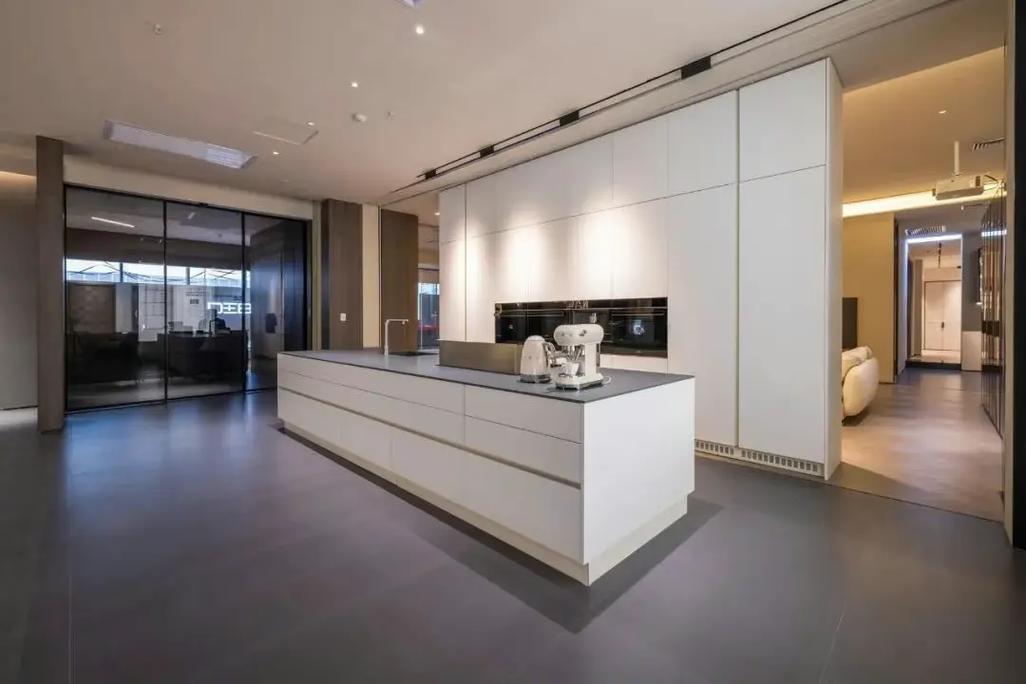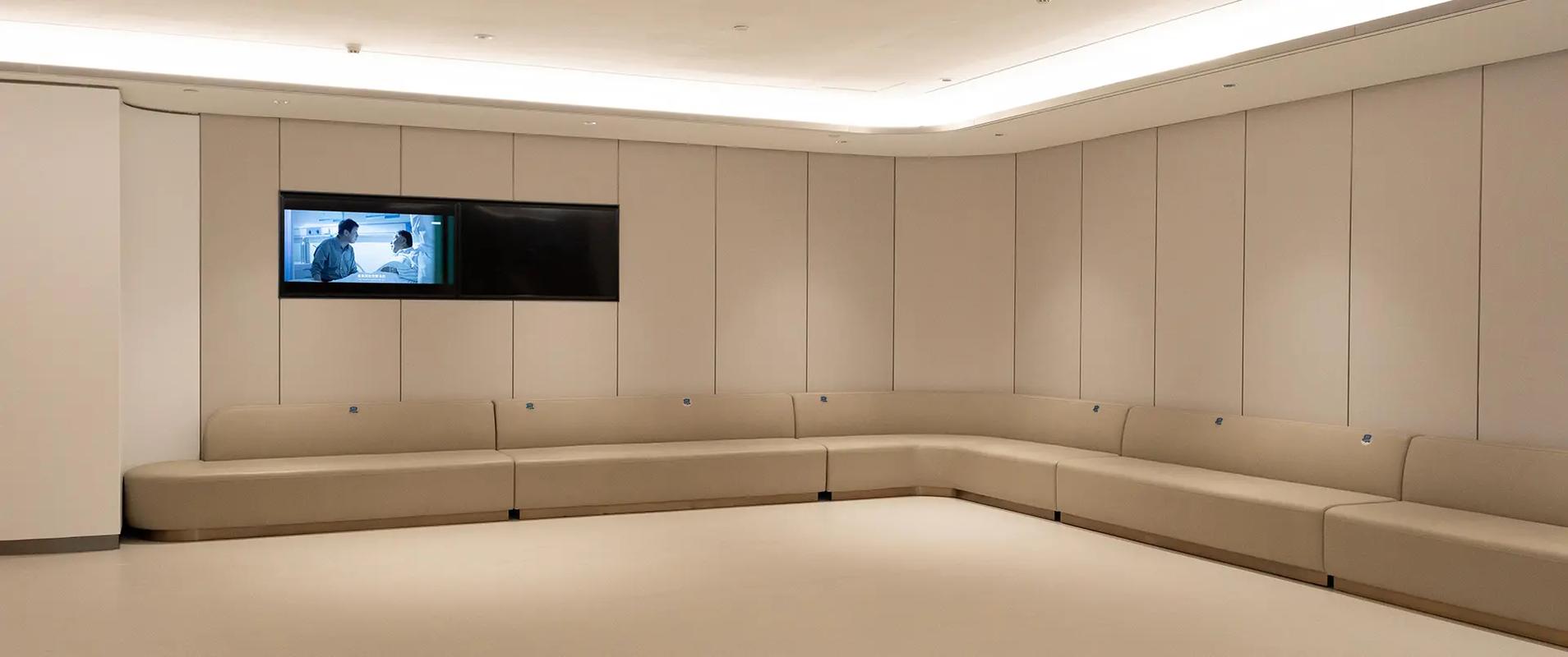Introduction—Why Misconceptions Cost Time, Money, and Safety
HPL fireproof panels earn their keep in the toughest places—busy corridors, healthcare, labs, classrooms, transit hubs, and high-end retail. They’re chosen not just for fire performance, but also for durability, hygiene, and design flexibility. Yet even great products fail when they’re misunderstood. Most call-backs, warranty disputes, and “mystery” defects trace back to avoidable misconceptions—usually about substrates, adhesives, acclimation, or detailing. This guide clears the fog so you get the aesthetics and performance you paid for.

What Exactly Are HPL Fireproof Panels?
Structure and Composition
High-pressure laminate (HPL) fireproof panels are thermoset composites: layers of kraft papers impregnated with phenolic resins and a decorative face (printed paper or foil) saturated with melamine resin. Under high heat and pressure, they cure into a dense, hard sheet that’s then bonded to a stable substrate (often MDF or particleboard) to create finished wall cladding, casework fronts, or door skins.
Typical Use Cases (Walls, Casework, Partitions, Doors)
Interior wall linings and feature walls
Hospital casework and lab millwork
School lockers and door facings
Transport terminals and commercial restrooms
Performance & Standards—What “Fireproof” Really Means
Fire Class Ratings and Local Codes (Overview)
“Fireproof” in the trade typically means the panel assembly achieves a specified fire performance (e.g., a “Class A”/“Class 0” classification depending on jurisdiction). Always check local code requirements and verify test reports for the specific product and assembly (panel + adhesive + substrate + wall).
Moisture, Impact, Abrasion—Beyond Fire
The beauty of HPL: it’s inherently resistant to abrasion, impact, and many chemicals. Fire is one attribute; dimensional stability and surface durability are equally critical for longevity.
Myth #1: HPL Fireproof Panels Only Come in Solid Colors and Wood Grains
The Misconception
HPL equals bland: a handful of solids, some wood looks, and not much else.
The Reality—Stone, Metal, and Custom Prints
Today’s ranges are wildly diverse—stone, terrazzo, concrete, oxides, brushed metal effects, textiles, color-through laminates, and even specialty textures. Brands like Polybett Fireproof Panels lean into designability with current stones, metals, and custom patterns, allowing you to match brand palettes or mimic natural materials with consistent quality.
Design Tips for Modern Interiors
Use large-scale stone patterns for monolithic walls without the weight or sealing of real stone.
Pair soft-touch super-matte finishes with warm woods for hospitality vibes.
Leverage custom prints for wayfinding, branding, or privacy motifs.
Myth #2: All Fireproof Panels Are Basically the Same Quality
The Misconception
If it looks the same on a sample chip, it will perform the same on the wall.
The Reality—Raw Materials, Resins, and Papers Matter
Quality is born from inputs and process: high-definition décor papers, virgin wood-pulp kraft, and consistent phenolic/melamine resin systems. Better materials equal richer color fidelity, lower formaldehyde emissions, and fewer processing issues (like edge cracking or post-forming failures).
How to Evaluate Quality Before You Buy
Ask for third-party fire and emissions reports for the specific grade.
Inspect large samples for print sharpness, color consistency, and surface defects.
Confirm recommended substrates, adhesives, and fabrication tolerances in the technical data sheet (TDS).
Myth #3: You Can Install HPL Fireproof Panels Immediately After Purchase
The Misconception
They’re sheets—just glue and go.
The Reality—Acclimation and Moisture Balance
HPL and wood-based substrates expand/contract with ambient temperature and humidity. If they haven’t equilibrated to the site, they’ll move after bonding—causing warping, telegraphing, or edge lift.
The 72-Hour Conditioning Rule
Stack panels and selected substrates flat, off the floor, with spacers in a shared environment for at least 72 hours. Keep temperature and humidity stable and within the manufacturer’s range. This syncs movement so the bonded assembly behaves like one material.

Myth #4: Installation Is Simple; Any Crew Can Do It
The Misconception
If you can hang drywall, you can install HPL.
The Reality—Adhesives, Tools, and Tolerances
HPL is unforgiving of shortcuts. Wrong adhesive, poor pressure, dull blades, or sloppy jointing can mean bubbles, ridges, and premature failure. Think of installation as equal parts craft and science.
What Professional-Grade Installation Looks Like
Correct adhesive for the substrate and environment
Even adhesive application (specified spread rate)
Uniform pressure (rollers/press, not just hand force)
Clean, square cuts and edges sealed or banded where needed
Documented inspections at hold points
Myth #5: On-Site Veneering Is Faster and More Convenient
The Misconception
Field-bonding saves time and transport.
The Reality—Shop Veneering vs. Field Veneering
Shop conditions beat job sites: controlled temperature/humidity, calibrated presses, dust control, and experienced fabricators. Field conditions often limit space, pressure, and cleanliness—raising the risk of voids, contamination, and uneven bonding.
If You Must Veneer On-Site—Minimum Requirements
Keep sheets/substrates impeccably clean and acclimated
Use the specified adhesive with measured spread rate
Apply even pressure (weighted cauls or portable presses), then respect cure times
Protect freshly bonded pieces from drafts, sun, and impacts
Myth #6: You Can Bond HPL Fireproof Panels to Any Substrate
The Misconception
Gypsum, calcium silicate, plywood, MDF, particleboard—it’s all the same.
The Reality—Compatible Substrates vs. Risky Ones
As a wood-based product, HPL behaves most like MDF or particleboard. Gypsum and calcium silicate boards move differently, often leading to bond stress, telegraphing, or edge lift. Unless the manufacturer explicitly allows it, stick to MDF/particleboard with the correct moisture content and density.
Why “Like-for-Like” Movement Matters
When panel and substrate expand/contract in sync, the assembly stays flat. Mismatched movement equals internal stress—your enemy.
Myth #7: Any Fireproof Panel Can Be Bent for Curves
The Misconception
Just heat it and bend it.
The Reality—Flat vs. Post-Form/Curvable Grades
Standard flat grades aren’t designed for tight radii. For curves, choose post-forming/curvable grades and observe the minimum bend radius recommended by the manufacturer (high-quality panels can reach tight radii—e.g., around 6R—depending on grade and technique).
Minimum Radius, Tooling, and Fabricator Skill
Curving success hinges on the right grade, tempering/conditioning, and expert tooling. Partner with fabricators who can demonstrate curved work with references.
Myth #8: Storage Conditions Aren’t a Big Deal
The Misconception
Leave pallets where there’s room; they’re tough.
The Reality—Climate, Stacking, and Edge Protection
Improper storage invites moisture pick-up, bowing, or edge damage. Store panels flat, fully supported, banded but not crushed, in a clean, dry, conditioned space away from direct sun or HVAC blasts.
A Simple Storage SOP
Keep panels/substrates together in the same room
Use stickers/spacers between sheets if unwrapped
Cover stacks with breathable protection; avoid plastic traps in humid sites
Handle edges carefully—no dragging
Myth #9: Cutting HPL Is Easy—Any Blade Will Do
The Misconception
A circular saw and a steady hand are enough.
The Reality—Correct Saws, Feeds, and Entry Side
Use sharp, high-tooth-count carbide blades on a sliding table/push saw for straight cuts. For manual scoring, a hook knife is preferred; for curves, a jigsaw with a fine blade. Always enter from the decor face to minimize chip-out, and support the sheet to prevent vibration.
Clean Edges Without Chip-Out
Fresh blades, correct feed rate
Zero-clearance inserts or scoring blades on panel saws
Deburr lightly; then finish with edge banding or polishing as specified
Myth #10: The Dark Core/Edge Is Ugly and Unavoidable
The Misconception
HPL edges are always dark and visually distracting.
The Reality—Edge Treatments That Elevate the Look
That dark brown core is normal—but you’ve got options:
45° mitered corners for crisp monolithic edges
Matching edge banding (PVC/ABS/PP or veneer)
Color-through laminates where available
Veneered solid edges on casework for premium finishes
Detailing Options Designers Love
Waterfall edges on reception desks, slim reveals to hide transitions, or shadow gaps that turn edges into features rather than flaws.

Pre-Installation Checklist—What to Verify Before You Start
Product grade matches the application (flat vs. post-form)
Fire classification and test reports suit the project
Substrate specified (MDF/particleboard) and moisture content verified
Panels and substrates acclimated together 72+ hours
Adhesive system selected for environment and substrate
Site conditions within temperature/humidity range
Layout drawings show joints, reveals, and expansion allowances
Protection plan for surfaces during and after install
Adhesives & Bonding—Choosing the Right System
Contact Cement vs. PVA vs. 2-Part PU
Contact cement: Classic for HPL-to-substrate; requires even double-sided application and firm rolling. Great tack; minimal clamping but no repositioning once set.
PVA (cross-linking): Longer open time, good for press bonding in shops; needs uniform pressure.
2-part PU/epoxy: High strength and moisture resistance; best reserved for specific assemblies and skilled crews due to pot life and cleanup.
Open Time, Tack, and Pressure
Follow the TDS for spread rate, open time, and cure. Use a J-roller or platen/press to achieve uniform pressure—bubbles and hollow spots come from uneven pressure or premature handling.
Environmental Factors—Temperature, Humidity, Ventilation
Keep install within the manufacturer’s temperature/humidity window.
Avoid direct sun or strong HVAC drafts during curing.
Ventilate adhesives per safety data sheets (SDS).
Expansion Gaps, Joints, and Movement Control
Leave expansion gaps at perimeters and penetrations; size per panel dimensions and site RH swings.
Use movement-friendly sealants where appropriate.
Break up long runs with reveals or joint trims to manage cumulative movement.
Quality Control—Inspections During and After Install
In-process checks: Adhesive coverage, pressure, alignment, and flushness at edges.
Post-install: Tap-test for voids, check joints/reveals, confirm plumb/level, and document everything with photos.
Sign-off: Only remove protective films after acceptance and immediate protection planning.
Care & Maintenance—Keeping Panels Performing Like New
Clean with non-abrasive, pH-neutral cleaners; avoid harsh solvents unless approved.
Protect edges from prolonged moisture exposure.
Implement a periodic inspection routine in high-traffic zones; repair edge banding promptly.
Conclusion—Design Freedom Without Compromise
Modern HPL fireproof panels deliver fire performance, durability, and almost unlimited design flexibility—from warm woods and concrete looks to custom brand prints. The key to long-term success is respecting the material: choose the right grade, acclimate with the substrate, use compatible adhesives, control the environment, and detail for movement. With a disciplined installation and smart maintenance, HPL fireproof panels won’t just look great on day one—they’ll keep earning their place for years.
FAQs
1) Can I install HPL fireproof panels directly on gypsum board?
Not recommended unless the manufacturer expressly allows it. Gypsum moves differently than wood-based substrates, increasing the risk of bond failure. MDF or particleboard are usually preferred.
2) How long should panels acclimate before bonding?
At least 72 hours with the intended substrate in the same controlled environment. Longer may be needed if the site is far from recommended conditions.
3) What’s the best adhesive for HPL?
There’s no one-size-fits-all. Contact cement is common for field work; PVA in shop presses; 2-part PU for demanding conditions. Always follow the product’s TDS.
4) Can all HPL panels be formed into curves?
No. Use post-forming or curvable grades and respect the manufacturer’s minimum bend radius. Work with experienced fabricators for tight radii.
5) How do I avoid visible dark edges?
Specify edge banding, color-through laminates, or mitered corners. Good detailing turns edges into design features.
English
Русский
العربية
Français
Español
Português
Deutsch
italiano
日本語
한국어
Nederlands
Tiếng Việt
ไทย
Polski
Türkçe
አማርኛ
Bahasa Melayu
தமிழ்
Filipino
Bahasa Indonesia
magyar
Română
Монгол
қазақ
Српски
हिन्दी
فارسی
Kiswahili
Slovenčina
Slovenščina
Svenska
українська
Ελληνικά
Suomi
Հայերեն
עברית
اردو
Shqip
বাংলা
Hrvatski
Afrikaans
Māori
සිංහල
Oʻzbekcha
latviešu
Беларуская мова
Bosanski
Български
ქართული
Lietuvių
Malti
Runasimi





